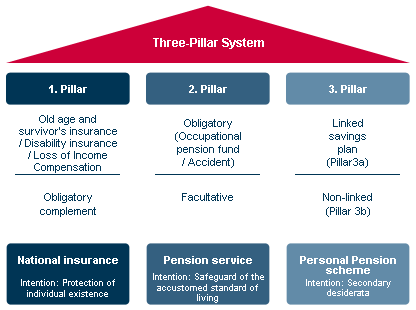The Swiss social security system is based on three pillars. The legal foundation for the so-called "three-pillar system" lies in the Federal Constitution in Article 111. It states specifically: "The federal government shall take measures for an adequate old-age, survivors and disability insurance. This rests on three pillars, namely the Federal Old-Age, Survivors and Disability Insurance, the professional care and self-care." In other words, the risks of old age, death, disability, accident and illness should be insured. Outside of these three pillars, there are other insurances, which can be understood under the term "social insurances". These include the insurances for the consequences of illness and accidents, the unemployment, family allowances, as well as the income replacement for national service and maternity.
Pillar 1 is primarily for the protection of individual existence. In other words, this first pillar should fund the everyday things and prevent poverty. The purpose of Pillar 2 could be seen as a "safeguard of the accustomed standard of living" and Pillar 3 is used primarily to finance needs, which are not covered by the first nor the second pillar.


